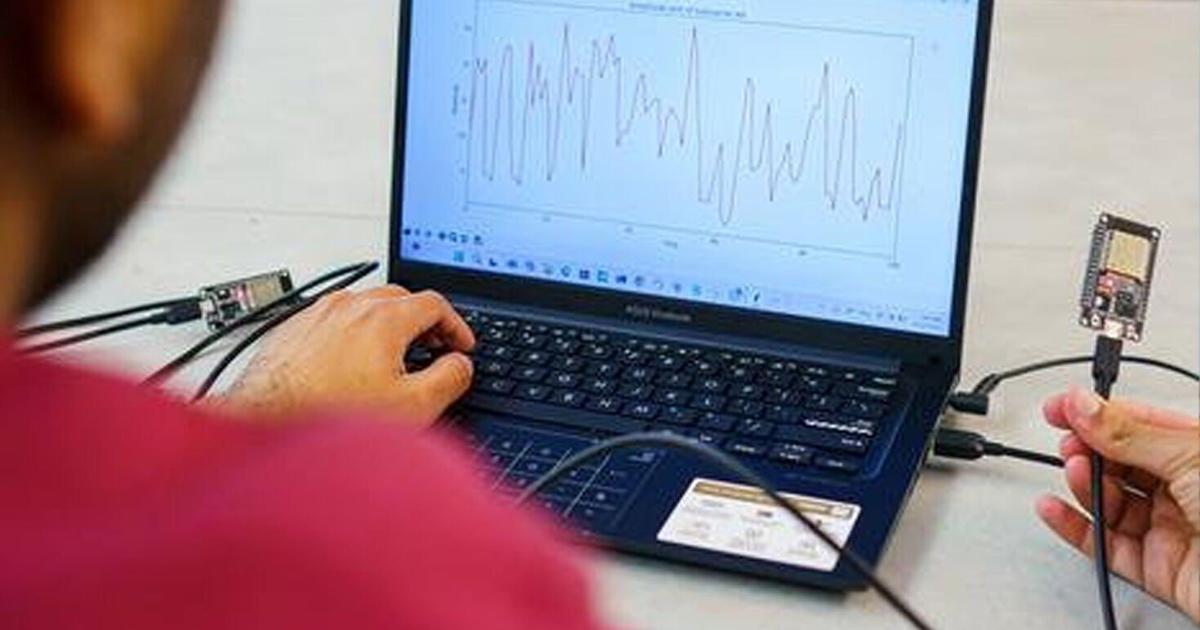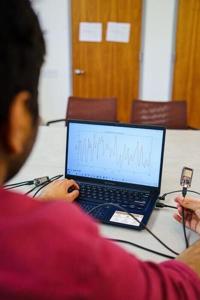Dreamlike Street
By Stephen Beech
WiFi signals can measure heart rate – with no wearable device needed, reveals new research.
Engineers showed their technique is effective even with the lowest-cost WiFi devices.
Heart rate is one of the most basic and important indicators of health, providing a snapshot into someone’s physical activity, stress and anxiety, hydration level, and more.
Traditionally, measuring heart rate requires some sort of wearable device, whether that be a smart watch or hospital-grade machinery.
But new research shows how the signal from a household WiFi device can be used to monitor heart rate with state-of-the-art accuracy – without the need for a wearable.
The proof of concept work shows that one day, anyone could take advantage of the non-intrusive WiFi-based health monitoring technology in their homes.
The American team proved their technique – which they have dubbed “Pulse-Fi” – works with even low-cost WiFi devices.
Scientists from the University of California, Santa Cruz, designed a system for accurately measuring heart rate that combines low-cost WiFi devices with a machine learning algorithm.
They explained that WiFi devices push out radio frequency waves into physical space around them and toward a receiving device, typically a computer or phone.
As the waves pass through objects in space, some of the wave is absorbed into those objects, causing mathematically detectable changes in the wave.
Pulse-Fi uses a WiFi transmitter and receiver that runs Pulse-Fi’s signal processing and machine learning algorithm.
The team trained the algorithm to distinguish even the faintest variations in signal caused by a human heartbeat by filtering out all other changes to the signal in the environment or caused by activity such as movement.
Team member Nayan Bhatia said: “The signal is very sensitive to the environment, so we have to select the right filters to remove all the unnecessary noise.”
The researchers ran experiments with 118 participants and found that after only five seconds of signal processing, they could measure heart rate with “clinical-level” accuracy.
Computer Science and Engineering Ph.D. student Nayan Bhatia demonstrates Pulse-Fi, a technology that uses WiFi signals to measure a person’s heart rate. (Erika Cardema/UC Santa Cruz via SWNS)
At five seconds of monitoring, they saw only half a beat per minute of error, with longer periods of monitoring time increasing the accuracy.
The team found that the Pulse-Fi system worked regardless of the position of the equipment in the room or the person whose heart rate was being measured – no matter if they were sitting, standing, lying down, or walking, the system still performed.
For each of the 118 participants, they tested 17 different body positions with accurate results
The results were found using low-cost ESP32 chips, which retail between $5 (£3.72) and $10 (£7.43) and Raspberry Pi chips, which cost closer to $30 (£22.29).
Results from the Raspberry Pi experiments show even better performance.
More expensive WiFi devices – such as those found in commercial routers – would likely further improve the accuracy of the system, according to the research team.
They also found that their system had accurate performance with a person three metres, or nearly 10 feet, away from the hardware.
Team member Pranay Kocheta said, “What we found was that because of the machine learning model, the distance apart basically had no effect on performance, which was a very big struggle for past models.
“The other thing was position – all the different things you encounter in day-to-day life, we wanted to make sure we were robust to however a person is living.”
Joshua Chehov
To make their heart rate detection system work, the researchers needed to train their machine learning algorithm to distinguish the faint detections in WiFi signals caused by a human heartbeat.
They found that there was no existing data for those patterns using an ESP32 device, so they set out to create their own dataset.
In the UC Santa Cruz Science and Engineering library, they set up their ESP32 system along with a standard oximeter to gather “ground truth” data.
By combining the data from the Pulse-Fi setup with the ground truth data, they could teach a neural network that changes in signals corresponded with heart rate.
As well as the ESP32 dataset they collected, they also tested Pulse-Fi using a dataset produced by a team of researchers in Brazil using a Raspberry Pi device, which created the most extensive existing dataset on WiFi for heart monitoring, as far as the researchers are aware.
Now, the team is working on extending their technique to detect breathing rate in addition to heart rate, which can be useful for the detection of conditions such as sleep apnoea.
The findings were published in the proceedings of the 2025 IEEE International Conference on Distributed Computing in Smart Systems and the Internet of Things (DCOSS-IoT) in Italy.





